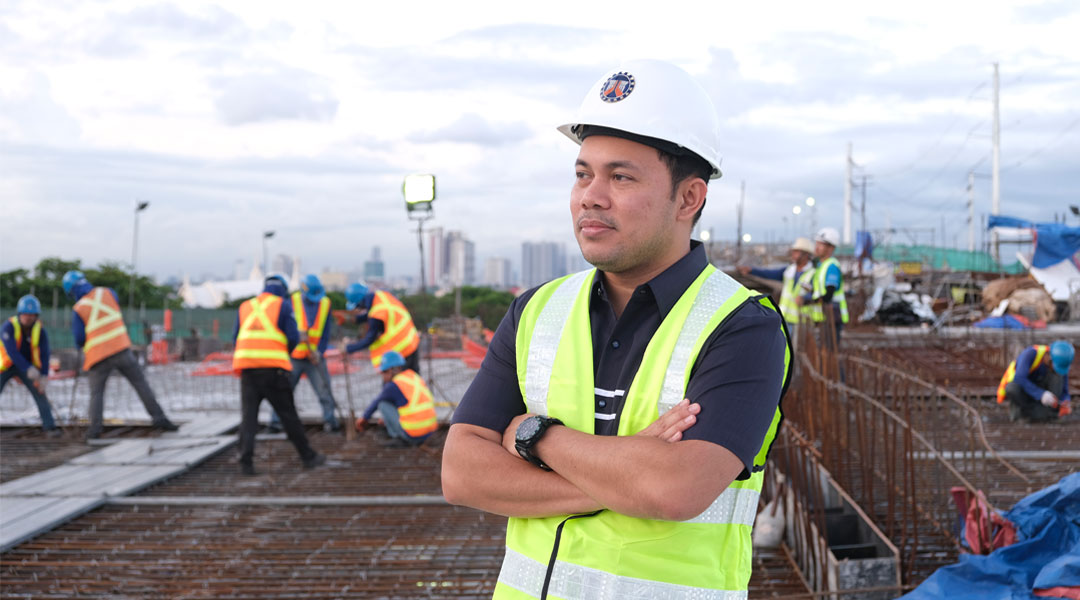
Build Build Build: Villar answers tough questions by former UN planners
“How does the DPWH identify and prioritize projects for the BBB Program, how does it jive with the Philippine Development Plan?”
“We have a very fairly strong lobby from a lot of environmentalists about the adverse effects of some infrastructure projects on the environment. Is that a significant obstacle in the case of the projects you are pursuing?”
“When we have national projects, provincial projects, this will always involve displacing people. What’s the policy of DPWH as regards these families, these persons that are displaced? What happens to them?”
These are some of the questions Department of Public Works and Highways (DPWH) Secretary Mark Villar answered in a special edition of BluPrint Conversations. In this episode, Villar sits down with two hard-nosed urban and environment planners Nathaniel von Einsiedel and Lilia Casanova to talk about the country’s bold infrastructure project, the Build Build Build Program. With BluPrint editor-in-chief Judith Torres as the mediator, the conversation revolves around the Build Build Build Program’s achievements since its implementation to date, and the plans for the short and medium term.
“If we look at our General Appropriations Act (GAA), we try as much as possible to spread out the development equally. At Metro Manila, for instance, a lot of the infrastructure projects are economically viable, so we can have the private sector engaged in some of these big-ticket projects. In other areas where it might not be as economically viable, the government steps in,” starts Villar. “It’s really spread out, and the important thing is to know that all these projects go through a very rigorous vetting process. We compute the internal economic rate of return for each project, and if it doesn’t hit the 10% threshold, we don’t immediately pursue it,” he adds.
Villar furthers, “It’s a major consideration but, all projects need clearance from the DENR. We don’t engage in projects that have a great effect on the ecosystem. For instance, these bridges, we do some piling works, but it doesn’t necessarily impact that much. If we find that environmental concerns are quite numerous, then we might set aside the project until the technology is available to make it more acceptable, environmentally.”
Read more:DPWH releases guidelines for beautiful national bridges
On the question of persons being displaced, Villar answers, “When we engage in a project, we have the means to relocate people properly. We don’t just ask people to go away and ‘Bahala na kayo‘ (Fend for yourselves). We give them compensation. In fact, we’ve already coordinated with National Housing Authority. For this year, we’ve reserved 8,000 homes for the people who might be relocated.” Villar asserts that the department did not encounter many issues regarding relocation. He expounds, “As long as you explain to the people what’s going to happen. You know, and you give them fair compensation, a place to live. Ultimately, it would be in their best interest to move locations.”
Watch the full conversation:
The planners
Nathaniel von Einsiedel is an Architect and Urban Environmental Planner, and accredited by the World Bank, Asian Development Bank, and the United Nations as an Urban Development & Management Specialist. He is presently President of the Alliance for Safe, Sustainable & Resilient Environments (ASSURE), and Principal Urban Planner of Consultants for Comprehensive Environmental Planning (CONCEP) Inc.
Lilia Casanova is an Environment Management Specialist, currently serving as Executive Director of the Center for Advanced Philippine Studies. She worked for 22 years at the United Nations and her last post was Deputy Director for UNEP or the United Nations Environment Program.


